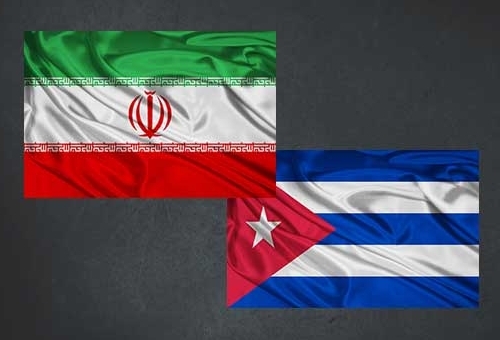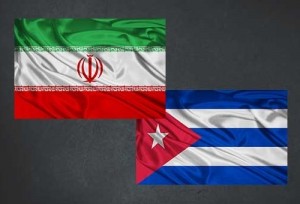Now for the Great Trial and perhaps some truth about Mexico, right at our southern border.
Juarez’s Missing Girls Were Sex Slaves—And Everyone Knew It
From the Daily Beast:
The news magazine Proceso reports 727 such disappearances between 2010 and 2014, and many more such crimes date at least as far back as the early 1990s.
Altogether 158 witnesses have testified in this case so far. Only six men are in the dock, accused of sex trafficking and the kidnapping and murder of 11 young women in Ciudad Juárez, but the institutions of Mexican law and order are on trial as well.
“The hypothesis of corruption and collusion, the complicity of police, is sustained by witnesses,” Santiago González, a lawyer with the Women’s Roundtable of Juárez, which represents the families of three of the victims, told The Daily Beast. “Organized crime always has to operate with the collusion or participation of the authorities.”
The tendency in hundreds of prior cases was for investigators to treat the disappearances as isolated instances, rather than the work of organized crime. Then in January 2012 the remains of 21 young women between the ages of 15 and 21 were found discarded in a dry stream bed called Arroyo del Navajo, 80 miles southeast of the city in the Juárez Valley.
The site where the remains were found is so rugged the detectives had to use all-terrain vehicles to reach it. DNA analysis showed a match with genetic material from the mothers of 11 of the young women who had disappeared in downtown Juárez in 2009 and 2010.
The six defendants on trial are being identified as members of Los Aztecas, a street gang linked to the Juárez cartel. Numerous witnesses have testified the defendants operated a kidnapping ring in plain sight in downtown Juárez from 2008 to at least 2011. They are accused of terrorizing girls between the ages of 15 and 21 born to humble families, coercing them into prostitution, and disposing of them as they pleased.
Implicit in the trial proceedings, which began in April, is the question of how organized crime could operate so brazenly for years in the busiest part of the city. The question looms even more starkly when one considers the period in question was when some 6,800 Mexican soldiers and 2,300 Federal Police were deployed to the area to combat organized crime as part of the “Joint Operation Chihuahua” decreed by then-Mexican President Felipe Calderón.
On June 1, a protected witness who is an admitted member of Los Aztecas testified he was responsible for paying the police to turn a blind eye to the group’s business of kidnapping and forced prostitution. The protected witness, identified by the initials LJRL, told the court that the Federal Police and Mexican Army occasionally accepted sex with the underage prostitutes in lieu of cash (some soldiers in the Army, for example, “asked to keep the girls a day or two for pleasure.”)
“Sometimes it was my job to pay the city, state, and federal police,” he continued, “besides that we were always in radio contact with them and they would tell us what was going on, how ‘hot’ things were in The Valley, what the ‘doubles’ [nickname for the Artist Assassins, an enemy gang] were up to, what they were doing, because we had to stay on our toes and be ready for when things got hot.”
LJRL, who for reasons of security testified in a separate room adjoining the court, said two high-ranking leaders of Los Aztecas ran the gang’s sex-trafficking operation from inside the walls of two prisons in Juárez. The gang leaders in question—Jesús Damián Pérez Ortega (alias El Patachú), and Pedro Payán Gloria (alias El Pifas)—were free to enter and exit the state prison “to cool off when things got hot.”
He said “El Pifas” was also the gang’s intermediary with Mexican soldiers stationed beyond the city limits:
Q. To clarify, why did this man you call El Pifas, why was he in communication with soldiers?
A. Because it was another point where women were kidnapped from, sometimes they asked to keep them a day or two for pleasure, if you will, or to hold the girls, it was also a point where the women were held en route to being transported to the United States or wherever it was they were being taken to.
The homicide rate in Juárez from 2008 to 2010 rose to be among the very highest in the world. Overlooked at times amid the all-encompassing violence were the unexplained disappearances of hundreds of young women, and it’s now obvious that the sex-trafficking operation brought to light at trial was hidden in plain sight. The 11 victims whose remains were identified had been kidnapped in broad daylight in the busy market area in downtown, a block or two from the Spanish cathedral in the main square.
Perla Ivonne Aguirre Gonzalez, 15, was abducted not long after the end of her shift at a fast-food restaurant downtown. Deysí Ramírez Muñoz, 16, was dismissed from her factory job without warning at 8 a.m. Her family suspects she was kidnapped on her return home, while changing buses downtown. Jazmín Salazar Ponce, 17, went to ask for a job at a shoe store downtown and disappeared.
State prosecutor Jorge González said some of the defendants were passing themselves off as small-business owners in the busy area of Reforma Market downtown. Witnesses described a grocery store with no merchandise, a shoe store with no customers, a modeling agency with no furniture. They were business fronts set up so the criminal could talk to the young women and ask questions to see if they had a network of support in place.
A protected witness identified in court by the initials KDM was a female employee of the grocery store. She said while she was employed there she frequently saw municipal and federal police enter through a side entrance.
“On public transportation, in jails, hotels, businesses—how could this be happening downtown and not be seen?” asked Imelda Marrufo, a lawyer and the director of the Women’s Roundtable of Ciudad Juárez, in an interview with The Daily Beast.
Referring to the overwhelming presence of Federal Police and Mexican soldiers in Juárez at the time, she said “Military checkpoints were part of the fabric of the city. With so much vigilance they must have seen the girls being transported around the city, and out of the city. The mothers want answers for why nothing was done to stop it.”
What’s more, according to numerous witnesses at trial, many of the young women who were murdered had been prostituted at a brothel no more than a few blocks from a police precinct headquarters. The brothel, called the Hotel Verde, is also near the Santa Fe International Bridge that links Juárez to El Paso, Texas. The Hotel Verde was a three-story headquarters for Los Aztecas, with prostitution on the first and second floors, and a drug warehouse on the third.
Two Federal Police officers were murdered at the Hotel Verde under unexplained circumstances in 2010.
LJRL testified that after the women were kidnapped downtown, they were transported to a neighborhood close by, and held at a safe house located eight blocks from a municipal police station. The safe house functioned as a hub for shuttling the kidnap victims to one of several locations in the city, and some out of state.
The sex trafficking was widespread enough that brothel owners advertised to sex traffickers like Los Aztecas in the classified section of the newspaper PM.
“What [LJRL] is saying is not an exclusive,” said the lawyer Santiago González. “He is only corroborating what many other witnesses have said.”
Asked why no police or soldiers had been indicted as part of the proceedings against Los Aztecas, González said the evidence is only being heard for the first time.
“It’s up to the authorities what they’re going to do with that information,” he said.
“The case won’t be closed. It is a very important step, but only the first step.”
This is the first case of sex trafficking prosecuted by the office of the state’s special counsel for crimes against women, which was formed back in 2012. At this one trial, some 300 witness eventually are expected to testify.



